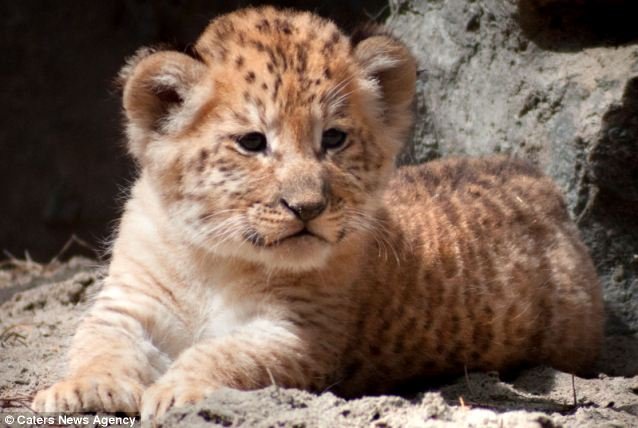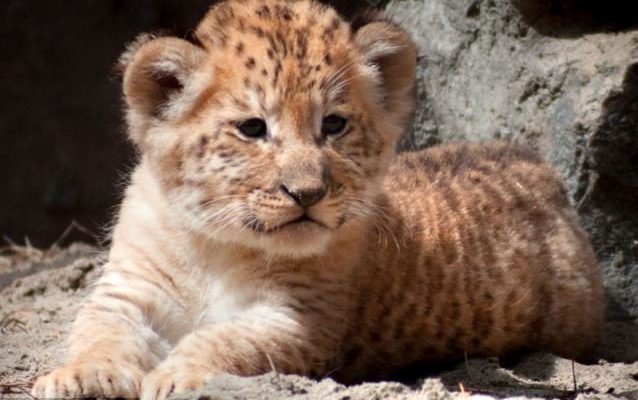
When it comes to raising their young, ligers share some parenting behaviors with their lion and tiger parents. However, there’s a twist. Ligers, being hybrids, often inherit certain traits from both species that influence how they interact with their cubs. So, let’s dive into the wild world of ligers and explore how these incredible animals care for their offspring.
Understanding Ligers: The Hybrid Background
Before we get into parenting, it’s important to understand what ligers are. Ligers are a crossbreed between a male lion and a female tiger. This unique lineage gives them interesting features and behaviors. Ligers tend to be larger than either parent species, thanks to something known as hybrid vigor. They can grow heavier and taller than tigers and possess a blend of physical traits from both lions and tigers.
Now, you might be wondering about their habitats. Generally, ligers don’t exist in the wild. They are mostly found in captivity, like zoos or wildlife parks. However, thinking about their behavior in a wild context is still valuable. If they were to roam freely, the parenting techniques they would use would be a fascinating mix of lion and tiger practices, showcasing the best of both worlds.
The Role of the Mother Liger
In the wild, it’s primarily the mother who takes charge of raising the young. When a mother liger gives birth, she tends to find a secluded, safe place to ensure her cubs are protected from predators. This den-like area is crucial for their survival. Just like lionesses, mother ligers are highly protective and attentive during the first few weeks after giving birth.
During this time, the mother will softly nurture her cubs, feeding them milk and keeping them warm. She instinctively knows how to provide for her young, drawing from both lion and tiger parenting styles. While she might not be as social as a lioness, she’ll still be fiercely dedicated, ensuring her cubs learn to be independent but also play safely.
Feeding and Nurturing Cub Behavior
Liger cubs are born with their eyes closed and are entirely dependent on their mother for nourishment. They rely solely on her milk for the first few weeks of life. As they grow, they begin to explore their environment, and that’s when the mother’s role shifts slightly. She begins introducing them to solid foods, often by bringing back small prey to show them how to hunt.
This nurturing process mirrors that of both lions and tigers. For example, tiger mothers are known for their solitary hunting skills, while lionesses often hunt in groups. A mother liger might use a combination of these methods, showcasing their hybrid nature. This aspect of raising young not only teaches cubs how to fend for themselves but also strengthens their bond with their mother.
Socialization and Playtime
Play is crucial for the development of ligers. As cubs grow, they engage in playful behaviors, which are essential for learning important survival skills. In the wild, this playful competition helps them understand their strength, speed, and agility. A mother liger encourages this play, often joining in to teach them social cues and hunting techniques.
During these playful sessions, you might see cubs practicing their pounces or mock-fighting, imitating what they would see in the wild. It’s a crucial part of their upbringing, giving them the skills they’ll need as they grow. Just like for lion and tiger cubs, this playtime fosters confidence and strengthens sibling bonds, which are vital for their emotional development.
The Risks and Challenges of Raising Liger Cubs
Raising liger cubs isn’t just about nurturing; it comes with its fair share of challenges. One of the biggest risks is survival against potential threats. In the wild, even a mother liger would have to be cautious of larger predators. If she were to sense danger, she would instinctively move her cubs to a safer location, showcasing her protective instincts.
Moreover, competition for food can be intense. If a mother liger isn’t successful in hunting, she may struggle to provide for her cubs, just like any other wild parent. This struggle to find food can lead to significant stress, impacting her ability to care for her young. The hybrid nature of ligers might also lead to further challenges, as their size could make them less adaptable in certain environments.
The Role of Siblings in Development
Sibling relationships are significant in the life of a liger cub. As they grow, having brothers and sisters around can be incredibly beneficial. These interactions help cubs learn social skills and establish their place in the family dynamic. When siblings play together, they develop important life skills that play a crucial role in their future survival.
Interestingly, sibling rivalry often emerges during playtime, leading to a healthy competition that enhances their physical abilities. Just like human siblings, they learn to navigate relationships, enhancing their maturity. This family dynamic contributes greatly to their development, teaching them cooperation as well as rivalry, all essential for their growth.
In essence, raising young ligers in the wild would be a blend of instincts and learned behaviors from both lions and tigers. The mother’s protective nature, coupled with the playful interactions among siblings, creates a nurturing environment that is both challenging and enriching. While ligers primarily exist in captivity, thinking about their potential life in the wild helps us appreciate the complexities of their upbringing.
Through unique parenting strategies, ligers symbolize the fusion of two powerful species, offering insight into the broader animal kingdom and the intricate relationships that shape young lives. Knowing how ligers raise their young adds another layer to our understanding of wildlife, reminding us of the beauty and complexity of nature.

